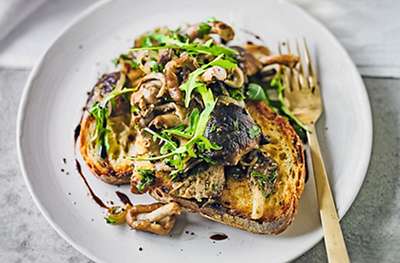0 added
Item price
£1.50Price per unit
£5/kg
Please note, we take every care to ensure the product, allergen and recipe information displayed is correct. However, should a product be unavailable, alternatives may be displayed and/or a substitution provided. If you have an allergy or intolerance, please always check the product label before use.
Warm a large, wide frying pan over a low heat on the largest ring on the hob. Fry the shallots with the olive oil for 4-6 minutes until soft.
Add the butter, and when it starts to foam, increase the heat to as high as possible and add all the mushrooms. Season generously and fry for 5-6 minutes, stirring occasionally, until golden and any liquid has evaporated. Add the porcini paste.
Transfer to a large bowl. Add the lemon juice, walnut oil and parsley then season again with salt, pepper and lemon juice to taste.
Toast the bread on a hot griddle until marked and charred. Rub each slice sparingly with garlic. Serve the mushrooms spooned onto the toast with a little rocket then drizzle generously with aged balsamic vinegar.
Typical values per serving when made using specific products in recipe
Energy | 1,552kJ/ 371kcals |
|---|---|
Fat | 17g |
Saturated Fat | 5.7g |
Carbohydrates | 41g |
Sugars | 6.3g |
Fibre | 4.1g |
Protein | 11g |
Salt | 1.1g |
Book a slot to see product availability at your nearest Waitrose & Partners store
0 added
Item price
£1.50Price per unit
£5/kg0 added
Item price
£5.50Price per unit
£11/litre0 added
Item price
£2.25Price per unit
£9/kg0 added
Item price
£2.50Price per unit
£16.67/kg0 added
Item price
£2.50Price per unit
£27.78/kg0 added
Item price
40pPrice per unit
40p each0 added
Item price
£2.60Price per unit
£10.40/litre0 added
Item price
85pPrice per unit
£34/kg0 added
Item price
£2.50Price per unit
£15.63/kg0 added
Item price
80pPrice per unit
26.7p each0 added
Item price
£1.80Price per unit
£20/kg0 added
Item price
£1.55Price per unit
£6.20/litre